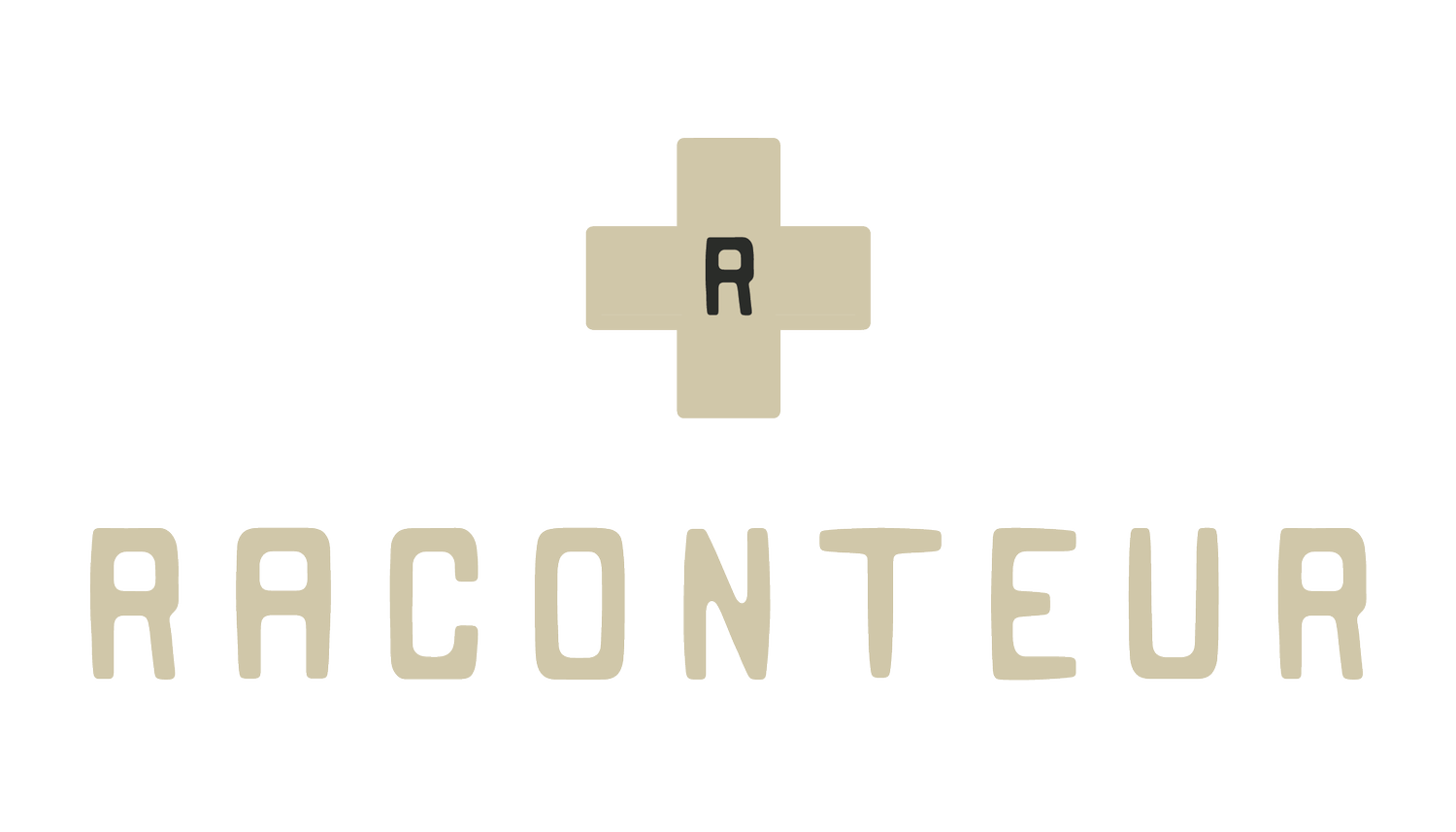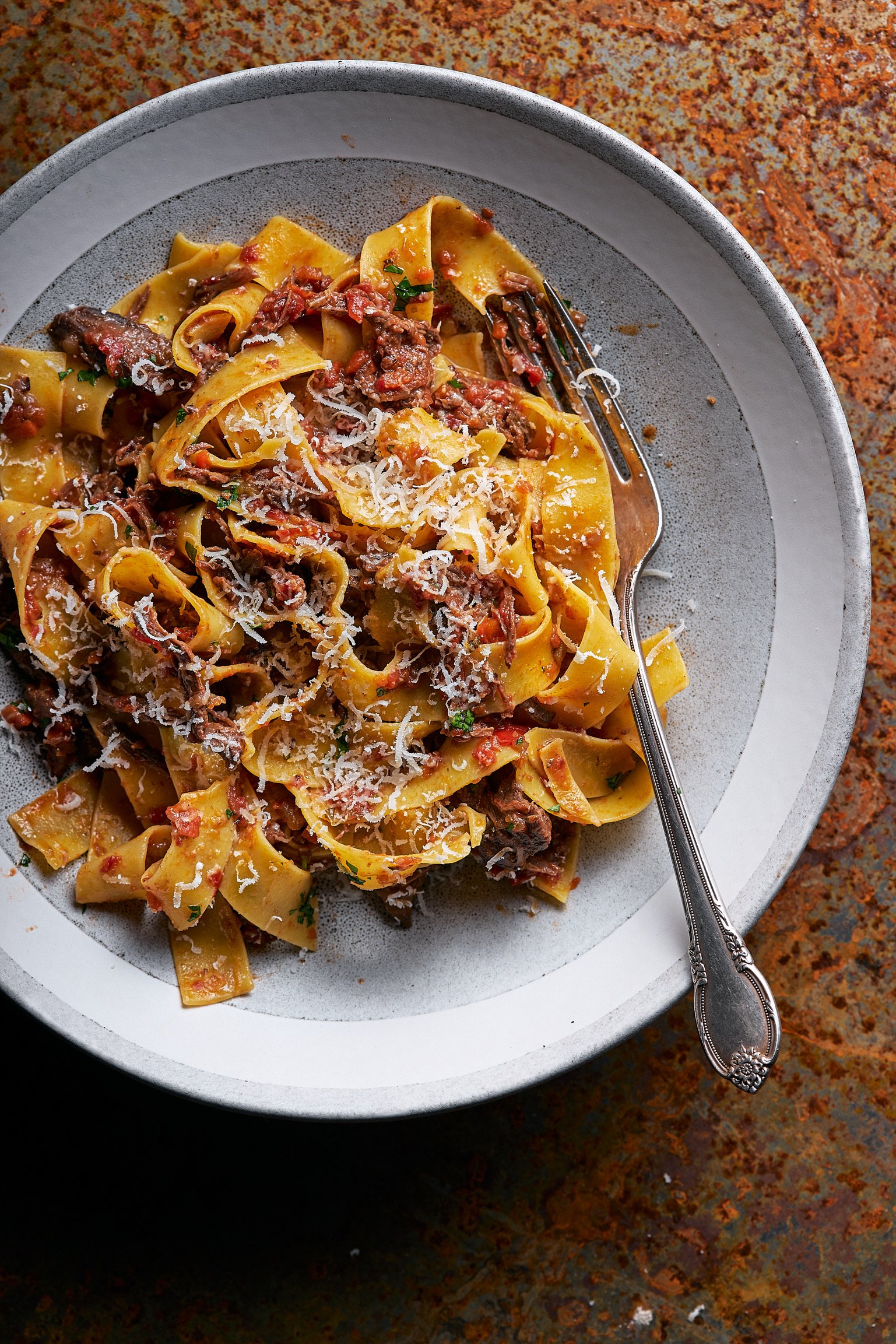Wild Hare Ragu Pappardelle
There are folks out there who will tell you that Jackrabbits aren’t worth eating, but then I’ve heard the same thing about Snowgeese and Sharptails. Any wild game prepared in a method that does not match its characteristics will result in substandard fare. The key to cooking Jacks is both time and bold robust ingredients that won’t be overpowered by the meat. A low and slow method of cooking wild hare will result in tender, fall off the bone meat packed full of flavour that is then pulled and put back into the sauce to form the Ragu.
Ragu, of course, is an Italian meat-based sauce traditionally served over pasta, in this case pappardelle. Tagliatelle, penne or garganelli make a decent substitute if you can’t find it or haven’t the time to make pappardelle. Try to avoid pastas that won’t hold the sauce as well like spaghetti, fettucine or smaller pastas shapes.
*As with any meat and especially wild game it is important to check for lesions, tumours, worms, etc. and handle all meat in a safe and sanitary, timely manner.
Recipe:
Ingredients:
1 White-tailed Jackrabbit, silver skin removed and broken down into five pieces. (Front and hind quarters as well as saddle)
3 tablespoons olive oil
Salt
2 cloves of garlic, crushed
1 cup finely minced carrot
2 cups finely chopped onion
1 cup finely minced celery
1 tablespoon chopped sage leaves
1 tablespoon chopped rosemary
A pinch of crushed red pepper
1 28 ounce can of san marazano whole tomatoes, hand crushed
2 tablespoons tomato paste
1 cup red wine
Fresh Italian parsley and grated parm or pecorino, for garnish
Method:
Preheat oven to 275f. In a large Dutch oven heat the olive oil and brown the hare pieces, salting them as they brown. Don’t overcrowd the meat; brown them in a few batches to avoid overcrowding if you have to. Remove when browned and set aside.
Add the onions, garlic, carrots and celery and cook until they start to brown. Add all the meat back to the dutch oven with all the herbs and mix well. Add the pinch of crushed red pepper and let it all cook for a minute or two.
Take cup of red wine (Sangiovese or Primitvo based preferably) and along with a tablespoon of tomato paste whisk it together before adding it to the dutch oven along with the crushed tomatoes. Mix well until combined. Bring just to a boil.
Put the lid on the Dutch oven and place it into the oven to slowly cook for 2 – 3 hours.
After the 2 hours take the hare pieces out of the pot and pull all the meat off the bone. At this point it should just fall off easily, if it doesn’t return it to the pot and cook longer. Cook until meat easily pulls of the bone. Pull or shred the meat with a fork.
With a hand immersion blender, blend half of the sauce right inside the pot and mix well. If you don’t have an immersion blender, take half the sauce and blend it before adding it back to the pot.
Take the shredded meat and add it all back to the pot.
Cook your pasta until al dente. A few minutes before pasta is cooked take just enough starchy pasta water to loosen up the ragu a touch and stir to incorporate. Starchy pasta will help the sauce stick to the pasta.
Drain and reserve 1 cup of pasta water. Add pasta to a pan with the ragu and while continuing to cook add the ragu along with some of the reserved pasta water if it appears too dry.
Serve in bowls, grate fresh parmigiano or pecorino cheese on top and garnish with freshly chopped Italian parsley.
Pair with a good bottle of Sangiovese based wine such as a Chianti Classico or alternatively with an earthy Primitivo.
Read Blaine’s “4 Italians, 2 Shorthairs, a Ukrainian, a Setter, and a Munster walk into a Bed and Breakfast…” for the story behind this delicious recipe.



